
views
Creating a Stainable Surface
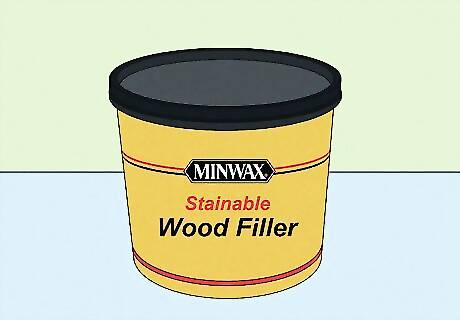
Ensure that the wood filler you’ve used is stainable. The wood filler should state on the packaging whether it’s stainable or not—if it’s water-based or solvent-based, it should hold a stain well. If it isn’t stainable, such as an oil-based wood filler, it won’t hold the color well when you go to paint it.
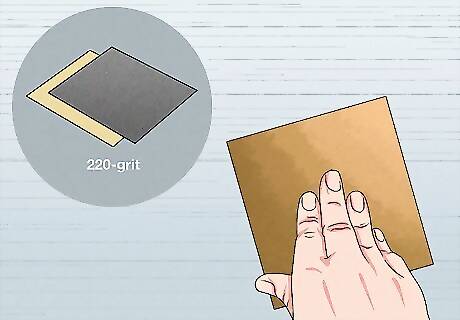
Sand the wood filler section. Sanding the spot before applying the stain will allow it to adhere evenly. If it’s a small spot such as a nail hole or gouge mark, you can sand it by hand using a piece of sandpaper, while larger sections are easier to sand with a palm sander. Use 220-grit sandpaper for a smooth finish that works well with stains. Sand in the direction of the wood’s grain.

Wipe off excess dust from the wood. Use a wet rag to wipe off the sawdust created from sanding the wood filler section. Follow up with a dry rag to ensure you removed all of the dust, and let the wood dry completely before applying the stain. You can also use a small hand vacuum, if necessary.
Forming the Right Color Match

Choose an appropriate color for your wood stain. If you’re touching up wood that you’ve previously stained, all you’ll need is the stain you originally used. If you’re going to stain the entire piece of wood, along with the filler, it’s best to choose a stain that’s closest to the original color of the wood. Keep in mind that if you're using a semi-transparent stain, you'll still likely be able to see the area that was patched. If you're using an opaque stain, the color may look uniform, but you still may notice a textural difference in the wood.
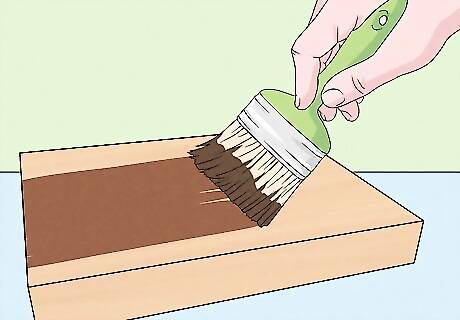
Test the stain on spare wood or a small section of the filler. Wood fillers can take stains differently than the wood does, so it’s best to test the stain out beforehand if possible. Apply some wood filler to a spare piece of wood and apply the stain over it to see if it’s too light, too dark, or just right. Shake the stain well before using it. Wait for the wood stain to dry before deciding if the color is right. The drying time depends on the thickness of the filler, type of stain, variety of wood, and the temperature and humidity.
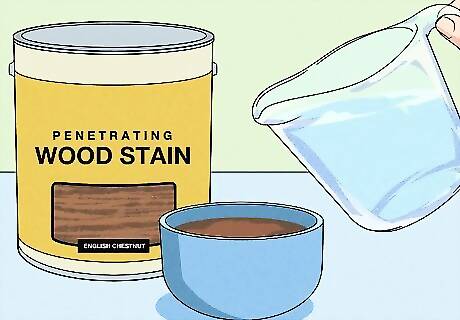
Thin out the stain if it appears too dark for the wood filler. If you test the stain on a piece of wood and it’s too dark, pour some of the stain into a cup and add few drops of water. You’ll have to experiment to find out what the perfect proportions are, so add very small amounts of water at a time. Once you’ve added water, mix it in with the stain and test the stain on a piece of spare wood with filler on it again. It’s better to have a stain that’s too light as opposed to too dark, since you can apply additional layers of stain if necessary.
Applying the Stain
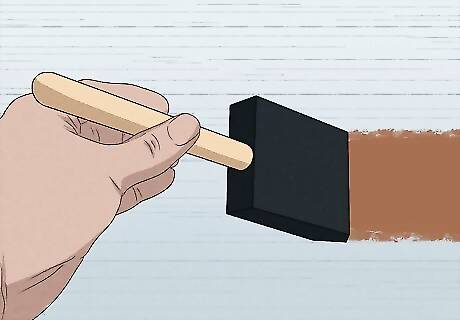
Apply the stain to the wood filler using a brush. Use a foam brush or similar tool to carefully stain the wood filler. If it’s a small spot, such as a nail hole, you may need to use a small paintbrush to apply the stain. Use even strokes and apply a thin layer of the stain. Allow the stain to dry for several minutes before wiping off the excess. Stains often take at least 1-2 days to dry on wood completely, so check the directions on your stain to find out specific drying time.
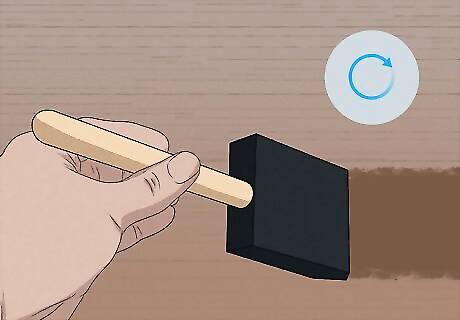
Add another coat of stain if it’s too light. If the wood filler is still too light after it’s been stained, repeat the process using a brush and apply another thin coat. Wait for it to dry completely before adding another layer to see how dark it truly is. You can repeat this process of applying additional layers of stain until the wood filler matches the color of the stained wood.

Remove the wood stain if it’s too dark. If it’s a thin layer of stain, you may be able to use a palm sander to sand off the top layer of the stain. If you can't sand off the top layer, apply a stain stripper to the wood according to the directions on the package. Let the liquid sit for the recommended amount of time, then wipe it away with a clean, lint-free cloth. You can either try to strip the stain from the small section that contains wood filler, or you can remove the stain from the entire piece of wood. Apply the stain again to the even, unstained surface for better results. Alternatively, you can apply the stain to the surrounding area to match the wood to the wood filler section.

















Comments
0 comment